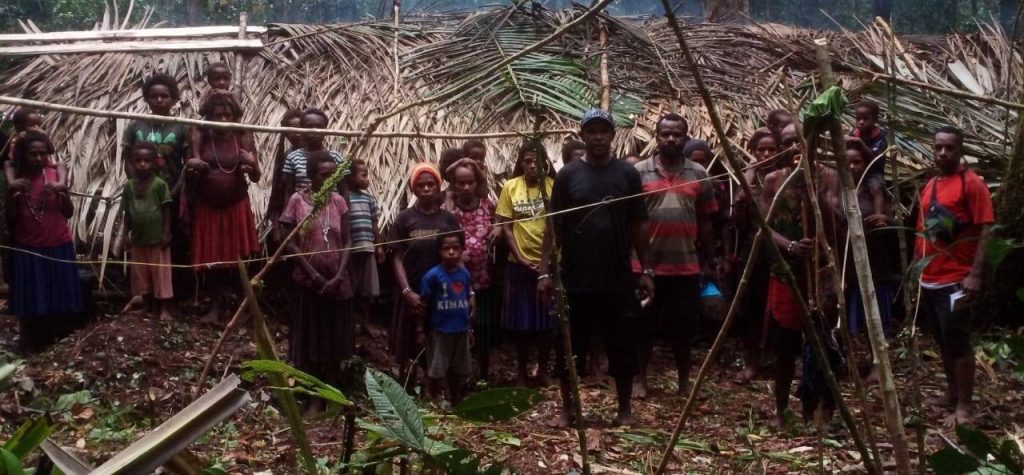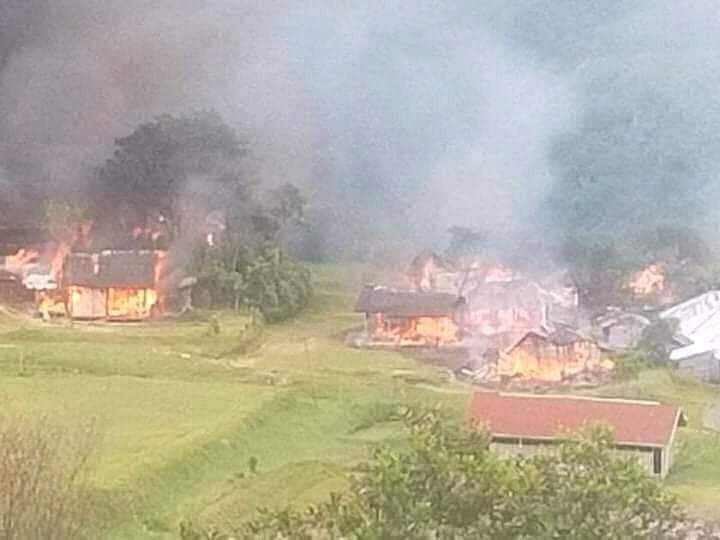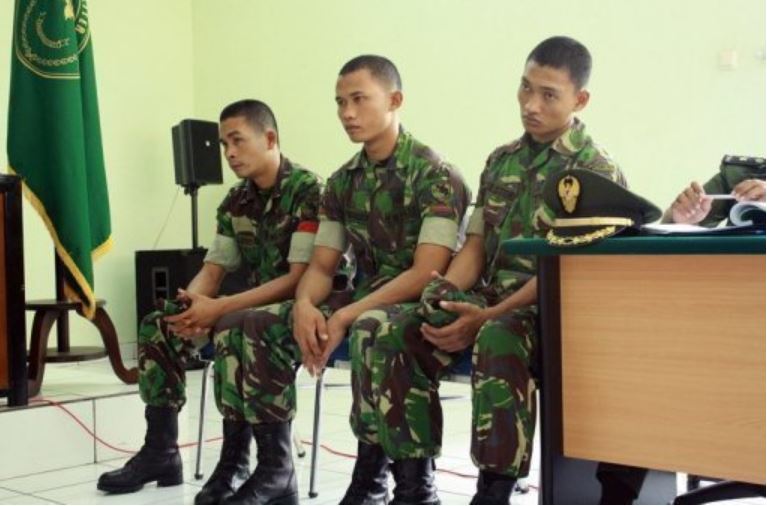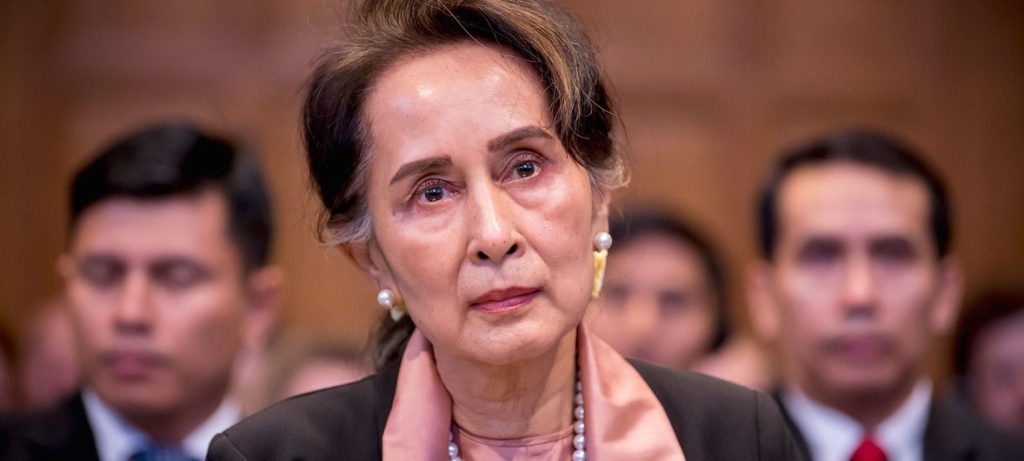On 23 December 2021, the chief of the Papua Regional Police in Indonesia, Mathius Fakhiri, gave a press conference in which he announced that armed contacts between Indonesian security forces and resistance fighters in the Papua Province had risen by 87,57% in comparison to the previous year. Fakhiri referred to 92 armed clashes throughout 2021. He elaborated that 44 people had lost their lives during those clashes, comprising 15 security force members, 11 resistance fighters[1] and 18 civilians. Even though, the police figures on conflict-related fatalities are not consistent with those of other observers, the rising number of clashes unequivocally illustrates a significant aggravation of the armed conflict in West Papua throughout 2021.
West Papua, comprised of Indonesia’s eastern most provinces Papua and Papua Barat, has been a place of political conflict and tensions for decades. Human rights defenders have monitored the armed conflict in West Papua over the past years. Alternative data, based on case reports of human rights violations and media monitoring, suggests that armed clashes have caused the lives of at least 28 civilians in both Papuan provinces throughout 2021. This figure excludes the hundreds of indigenous Papuans who have died during or as a result of displacement. According to local human rights observers, 251 internally displaced persons (IDPs) have died in 2021 (see table below). Most of them originate from Nduga where the armed conflict has been ongoing since December 2018. Most of the IDPs have not returned to their homes yet and continue to reside in shelters and temporary settlements scattered across West Papua.
| Armed conflict in West Papua | 2017 | 2018 | 2019 | 2020 | 2021 |
| Number of armed clashes | 24 | 44 | 33 | 64 | 92 |
| Number of casualties among security forces | 3 | 8 | 18 | 11 | 18 |
| Number of injured security forces | 8 | 15 | 12 | 10 | 34 |
| Number of casualties among TPN-PB fighters | 2 | 12 | 14 | 14 | 24 |
| Number of injured TPN-PB fighters | 2 | 4 | 0 | 1 | 8 |
| Total number of casualties among civilians displaced through conflict | 3 | 62 | 216 | 213 | 279 |
| Total number of casualties among civilians during armed clashes or raids | 3 | 42 | 20 | 27 | 28 |
| Number of casualties among civilians caused by security force members | 0 | 17 | 13 | 20 | 12 |
| Number of casualties among civilians caused by TPN-PB fighters | 3 | 25 | 7 | 7 | 14 |
| Number of casualties among civilians (perpetrators unclear) | 0 | 0 | 0 | 0 | 2 |
| Number victims who died during armed conflict due to consequences of internal displacement | 0 | 20 | 196 | 186 | 251 |
| Total number of injured civilians | 12 | 15 | 9 | 26 | 20 |
| Number of injured civilians caused by security force members | 9 | 7 | 9 | 10 | 7 |
| Number of injured civilians caused by TPN-PB fighters | 3 | 8 | 0 | 16 | 13 |
Statistics suggest that the conflict has become more violent causing the casualties and injuries among combatants to increase. In 2020, eleven security force members reportedly died, while ten were injured during combat. The year 2021 marked a sad climax of the armed conflict with 18 security forces killed and 34 injured. At the same time, the number of fatalities among TPNPB fighters has increased from 14 in 2020 to 24 in 2021. At least eight TPNPB fighters sustained injures during armed contacts.
The pattern of cases supports the observation that the conflict has gained in violence. Both, security force members as well as the TPNPB, repeatedly launched aimed attacks at civilians. While TPNPB fighters burnt down public facilities and attacked migrants whom they alleged of working undercover for the military, security forces repeatedly directed air and ground raids at indigenous settlements. In October 2021, IDPs from the Pegunungan Bintang regency accused Indonesian military forces of dropping mortar grenades on indigenous settlements, destroying houses, livestock and gardens.
Meanwhile, the armed conflict in West Papua has expanded over the seven regencies Intan Jaya, Pegunungan Bintang, Mimika, Nduga, Maybrat, Yahukimo, Puncak and Kepulauan Yapen, It is the first time in the past five years, that the conflict has reached a regency in the Papua Barat Province, even though armed activity in the Maybrat regency remained low with three clashes in 2021. The hotspots of armed conflict were the Puncak regency, with 28 reported clashes, followed by Intan Jaya where observers documented 24 clashes throughout 2021. Armed contacts have significantly increased in the regencies Pegunungan Bintang (10 clashes) and Yahukimo (11 clashes). In 2020, observers documented only isolated armed contacts in both regencies.
The geographical expansion of the armed conflict is mirrored in the growing number of IDPs in the affected areas.
Conflict-related internal displacements
Security force operations accompanied by human rights violations have resulted in a great number of internal displacements over the past three years. The total number of IDPs was estimated to reach more than 66,000 persons as of 31 December 2021 (see table below). The Papuan People’s Solidarity Rejecting State Violence (SORAKPATOK) documented a total number of 13,687 new displacements between January and November 2021, alone. The data on the total number of IDPs and the condition at their shelters is not comprehensive because security forces limit access for human rights defenders and journalists to the conflict areas.
| No | Regency | IDPs | Displacement date | Additional info |
| 1 | Nduga | 46,000[2] | 02 Dec 18 | 621 IDPs reportedly died since being displaced |
| 2 | Puncak | 2,724[3] | 27 April 21 | at least 16 IDPs have reportedly died during displacement |
| 3 | Intan Jaya | 5,859[4] | 26 Oct 21 | at least 126 IDPs face health issues, 11 IDPs reportedly died |
| 4 | Maybrat | 3,121[5] | 02 Sept 21 | IDPs originated from 5 districts, 8 IDPs reportedly died |
| 5 | Pegunungan Bintang | 1,937[6] | 10 Oct 21 | about 200 IDPs reportedly fled to PNG, 3 IDPs reportedly died |
| 6 | Yahukimo | 4,695[7] | 20 Nov 21 | IDPs from 13 villages sought shelter in 15 temporary camps, 16 women gave birth without medical attention, 7 IDPs reportedly died |
| 7 | Kepulauan Yapen | > 2,000[8] | 8 Dec 21 | IDPs originate from Kosiwo District |
| T O T A L | > 66,336 |
The Indonesian government continues to deploy troops to the conflict areas in an attempt to prosecute the perpetrators and demonstrate its military strength against the TPNPB. As a result of the deployments, indigenous Papuans flee their homes in fear of being killed or tortured during the security force operations. Therefore, the internal displacements in West Papua must be understood in the context of the long-standing political conflict there.

The majority of IDPs in West Papua have not returned to their homes due to the heavy security force presence and ongoing armed clashes in the conflict areas[9]. Many continue to live in temporary shelters where they have no access to food and are exposed to the harsh weather conditions in the Papuan central highlands, without humanitarian access. Hundreds of IDPs in these shelters have died as a result of sickness, malnutrition, exhaustion, and hypothermia. Most displaced children do not have access to education after fleeing their villages[10]. Apart from isolated initiatives to provide aid deliveries[11], the central government ignores the presence of IDPs in West Papua, while deploying additional troops to West Papua.
Lack of political will for a sustainable solution to the conflict
President Joko Widodo and other government officials have publicly conveyed their openness for a dialogue between Jakarta and West Papua. However, announcements and statements were never followed up through meaningful action. The Indonesian Government wants to maintain a firm grip on West Papua, whose natural resources and low population density are seen as very conducive to Indonesia’s future economy. Hence, the government proceeds with security force deployments to the region and to limit human rights and fundamental freedoms for Papuan civil society.
On 28 November 2021, the Indonesian Government’s Coordinating Minister for Politics, Legal and Security Affairs, Mahfud MD, announced in an interview with media outlet CNN Indonesia that the government will change its policy in West Papua. The change in policy was later confirmed by freshly appointed armed forces chief, Andika Perkasa. Mahfud announced that the current combat operations in West Papua will become territorial operations by January 2022. This statement contradicts previous public statements in which government officials repeatedly underlined that the security operations in West Papua are law enforcement operations, not combat operations.

However, this change in policy is not going to contribute to a sustainable and peaceful solution but will likely lead to an aggravation of the armed conflict. The new government approach suggests that military infrastructure in West Papua will be strengthened and expanded. The new structure should be expanded down to the village level, where military members – so-called Babinsa – are deployed to villages to monitor community activities. The military commands and sub-commands in West-Papua will be involved in all of the government’s development programs. Non-organic military personnel shall be placed under the local command structure.
The pattern of cases illustrate that increased security force presence does not lead to a pacification in that area but inevitably increases the risk of armed attacks against security force members. Fatalities among security force members during such attacks are usually responded with raids in nearby villages, causing the displacement of local indigenous communities. There is little doubt that the new strategy will perpetuate the cycle of violence in West Papua.
What is needed is a solid government commitment to enter into dialogue with all stakeholders in West Papua, including the United Liberation Movement for West Papua (ULMWP) and the TPNPB. As long as the government represents the view that the lack of economic development and prosperity are the root causes of the conflict in West Papua, the expectations of Papuans towards truth and justice will not be met. President Jokowi needs to have the courage and political will to include all stakeholders in a dialogue, which must address all root causes of the conflict, namely past and ongoing human rights violations as well as differing perspectives regarding the historic integration of West Papua into the Indonesian state.
[1] The police and national media commonly use the term armed criminal groups for the West Papua National Liberation Army (TPNPB)
[2] JPIC Kingmi Papua (22.11.2021): Laporan Pelanggaran HAM dan Operasi MIliter di Tanah Papua
[3] Jubi (9.11.2021): SORAKPATOK: 300 tewas dan 50 ribu warga Papua mengungsi, available at: https://jubi.co.id/sorakpatok-300-tewas-dan-50-ribu-warga-papua-mengungsi/
[4] CNN Indonesia (30.10.2021): Ribuan Warga Papua Mengungsi Usai Pecah Kontak Senjata, available at: https://www.cnnindonesia.com/nasional/20211030195433-12-714496/ribuan-warga-papua-mengungsi-usai-pecah-kontak-senjata
[5] Jubi (26.11.2021): Sekitar 575 pengungsi di Maybrat adalah anak usia sekolah, available at: https://jubi.co.id/sekitar-575-pengungsi-di-maybrat-adalah-anak-usia-sekolah/
[6] Number was compiled from multiple lists with names of IDPs which were compiled by local human rights defenders in Pegunugan Bintang in November 2021
[7] Number is based on data compiled by local church workers. The information was received on 24.12.2021
[8] International Coalition for Papua (16.12.2021): Four indigenous Papuans arrested during police raid in Kepulauan Yapen Regency, among them one minor, available at: https://humanrightspapua.org/news/2021/four-indigenous-papuans-arrested-during-police-raid-in-kepulauan-yapen-regency-among-them-one-minor/
[9] The situation is particularly worse for IDPs from Nduga, who have been living in displacement since December 2018. Most of them have moved to other Papuan regencies where they do not receive relief supplies and continue to lack access to free health care. The lack of coordination between the local government in Nduga and other local governments has caused the exclusion of Nduga IDPs from public healthcare services as many have lost their documents. According to solidarity groups, 621 IDPs died between December 2018 and November 2021 in the Jayawijaya Regency alone as a result of diseases and other strains.
[10] The lack of access to education for internally displaced children has been reported from almost all conflict-affected regencies apart from the Maybrat regency, Papua Barat Province
[11] In July 2019, the Indonesian Ministry for Social Affairs (Kementerian Sosial RI) reportedly prepared aid deliveries worth €44,079 (IDR 740,449,000) for IDPs from Nduga. The deliveries included 50 tonnes of rice, toys, school supplies, sports supplies, and supplies for vulnerable groups. Representatives of the Ministry came to the town of Wamena to coordinate the distribution of humanitarian goods. On 29 July 2019, a meeting between representatives of the local government, Ministry for Social Affairs, and the military was held at the KODIM 1702 military base. However, the humanitarian goods did not reach the IDPs because the Ministry of Social Affairs insisted on distributing the goods through the military, whom the IDPs regard as “enemy”. Their culture forbids them from receiving help from an enemy.



Pingback: New IPAC Report: How a pro-ISIS cell emerged in Papua? - Human Rights Monitor
Pingback: Minor executed by security forces during armed clashes in Nduga Regency - Human Rights Monitor
Pingback: Armed conflict in West Papua reaches new level of escalation in 2022 -
Pingback: Joint security forces execute IDP in Yahukimo Regency -
Pingback: Human Rights in West Papua in 2022 - no improvement but further deterioration -
Pingback: Konflik bersenjata di Papua Barat mencapai tingkat eskalasi baru pada tahun 2022 -
Pingback: Hak Asasi Manusia di Papua Barat pada tahun 2022 - tidak ada perbaikan tetapi semakin memburuk -
Pingback: West Papua Annual Report 2022 - Human rights and conflict situation -
Pingback: Laporan Tahunan Tanah Papua 2022 - Hak Asasi Manusia dan Situasi Konflik -